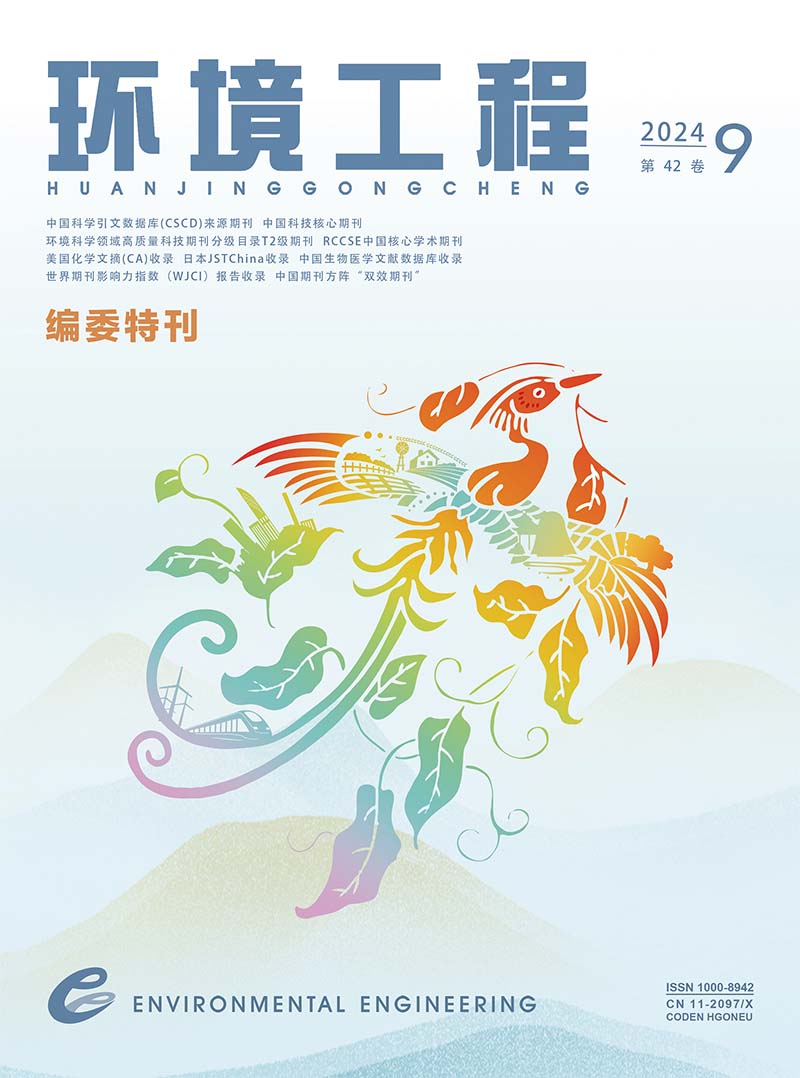| [1] |
MURINDABABISHA D, YUSUF A, SUN Y, et al. Current progress on catalytic oxidation of toluene: a review[J]. Environmental Science and Pollution Research, 2021, 1: 1-31.
|
| [2] |
SHEN Y, LIU S, LU L, et al. Photocatalytic degradation of toluene by a TiO2 pn homojunction nanostructure[J]. ACS Applied Nano Materials, 2022, 5 (12): 18612-18621.
|
| [3] |
ZHANG X, CHEN J, JIANG S, et al. Enhanced photocatalytic degradation of gaseous toluene and liquidus tetracycline by anatase/rutile titanium dioxide with heterophase junction derived from materials of Institut Lavoisier-125 (Ti): degradation pathway and mechanism studies[J]. Journal of Colloid and Interface Science, 2021, 15 (588): 122-137.
|
| [4] |
YU J, WANG X, CHEN L, et al. Enhanced adsorption and visible-light photocatalytic degradation of toluene by CQDs/UiO-66 MOG with hierarchical pores[J]. Chemical Engineering Journal, 2022, 435(1): 135033.
|
| [5] |
LI J, WU N. Semiconductor-based photocatalysts and photoelectrochemical cells for solar fuel generation: a review[J]. Catalysis Science & Technology, 2015, 5 (3): 1360-1384.
|
| [6] |
ILIVE V, TOMOVA D, RAKOVSKY S, et al. Enhancement of photocatalytic oxidation of oxalic acid by gold modified WO3/TiO2 photocatalysts under UV and visible light irradiation[J]. Journal of Molecular Catalysis A: Chemical, 2010, 327 (1/2): 51-57.
|
| [7] |
JIA Y, ZHANG X, WANG R, et al. Energy band engineering of WO3/Bi2WO6 direct Z-scheme for enhanced photocatalytic toluene degradation[J]. Applied Surface Science, 2023, 618(1): 156636.
|
| [8] |
LI J J, ZHANG M, WENG B, et al. Oxygen vacancies mediated charge separation and collection in Pt/WO3 nanosheets for enhanced photocatalytic performance[J]. Applied Surface Science, 2020, 30 (507): 145133.
|
| [9] |
CAO J, LUO B, LIN H, et al. Photocatalytic activity of novel AgBr/WO3 composite photocatalyst under visible light irradiation for methyl orange degradation[J]. Journal of Hazardous Materials, 2011, 190 (1/2/3): 700-706.
|
| [10] |
TATSUMA T, TAKEDA S, SAITOH S, et al. Bactericidal effect of an energy storage TiO2-WO3 photocatalyst in dark[J]. Electrochemistry Communications, 2003, 5 (9): 793-796.
|
| [11] |
LIU X, WANG P, LI Y, et al. Reinforced upconversion and charge separation via mid-gap states in WO3 nanosheet with infrared light driven tetracycline degradation[J]. Chemical Engineering Journal, 2022, 431(1): 134134.
|
| [12] |
WANG X, SUN M, MURUGANANTHAN M, et al. Electrochemically self-doped WO3/TiO2 nanotubes for photocatalytic degradation of volatile organic compounds[J]. Applied Catalysis B: Environmental, 2020, 260(1): 118205.
|
| [13] |
CHEN Q, GAO G, FAN H, et al. Synergy of oxygen vacancies and acid sites on N-doped WO3 nanobelts for efficient C-C coupling synthesis of benzoin isopropyl ether[J]. ACS Applied Materials & Interfaces, 2022, 14(3): 4725-4738.
|
| [14] |
SAMUEL O, OTHMAN M H D, KAMALUDIN R, et al. WO3-based photocatalysts: a review on synthesis, performance enhancement and photocatalytic memory for environmental applications[J]. Ceramics International, 2022, 48 (5): 5845-5875.
|
| [15] |
ISMAIL A, FAISAL M, AL-HADDAD A. Mesoporous WO3-graphene photocatalyst for photocatalytic degradation of Methylene Blue dye under visible light illumination[J]. Journal of Environmental Sciences, 2018, 66: 328-337.
|
| [16] |
NAAZ F, ALSHEHRI S M, MAO Y, et al. Unraveling the chemoselective catalytic, photocatalytic and electrocatalytic applications of copper supported WO3 nanosheets[J]. Catalysis Communications, 2023, 178: 106678.
|
| [17] |
KONG L, GUO X, XU J, et al. Morphology control of WO3 nanoplate film on W foil by oxalic acid for photocatalytic gaseous acetaldehyde degradation[J]. Journal of Photochemistry and Photobiology A: Chemistry, 2020, 401: 112760.
|
| [18] |
CHEN Z, LIU G, CAO W, et al. Amorphous low-coordinated cobalt sulphide nanosheet electrode for electrochemically synthesizing hydrogen peroxide in acid media[J]. Applied Catalysis B: Environmental, 2023, 334:122825.
|


 Login
Login Register
Register E-alert
E-alert






 DownLoad:
DownLoad: